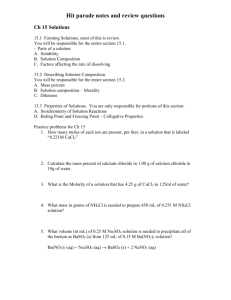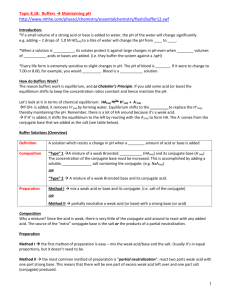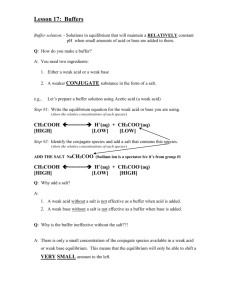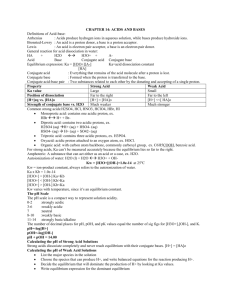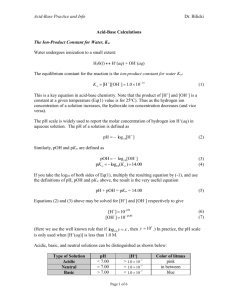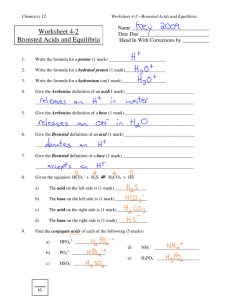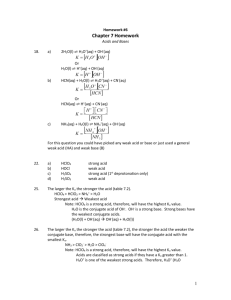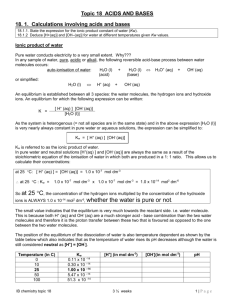ACIDS AND EQUILIBRIUM
advertisement
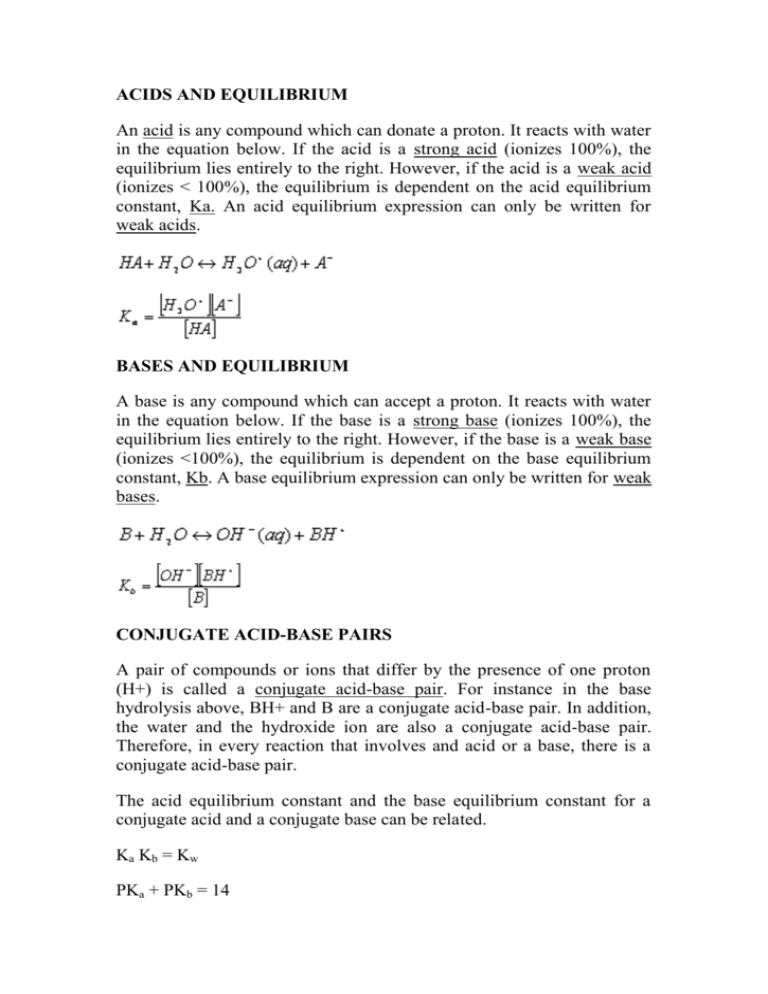
ACIDS AND EQUILIBRIUM An acid is any compound which can donate a proton. It reacts with water in the equation below. If the acid is a strong acid (ionizes 100%), the equilibrium lies entirely to the right. However, if the acid is a weak acid (ionizes < 100%), the equilibrium is dependent on the acid equilibrium constant, Ka. An acid equilibrium expression can only be written for weak acids. BASES AND EQUILIBRIUM A base is any compound which can accept a proton. It reacts with water in the equation below. If the base is a strong base (ionizes 100%), the equilibrium lies entirely to the right. However, if the base is a weak base (ionizes <100%), the equilibrium is dependent on the base equilibrium constant, Kb. A base equilibrium expression can only be written for weak bases. CONJUGATE ACID-BASE PAIRS A pair of compounds or ions that differ by the presence of one proton (H+) is called a conjugate acid-base pair. For instance in the base hydrolysis above, BH+ and B are a conjugate acid-base pair. In addition, the water and the hydroxide ion are also a conjugate acid-base pair. Therefore, in every reaction that involves and acid or a base, there is a conjugate acid-base pair. The acid equilibrium constant and the base equilibrium constant for a conjugate acid and a conjugate base can be related. Ka Kb = Kw PKa + PKb = 14 Therefore, if you know the kA for a weak acid (HA), you can calculate the Kb for its conjugate base (A-). Example / Calculate the PH of 0.2 mol.L-1 of ethylene .( Kb = 4.2 x10-10) B + H2O BH+ + OH- 0.2 0 0 -x +x +x 0.2 – x +x +x [BH+][OH-] Kb = --------------------- [OH-] = 2.9 x 105.5 [B] POH = 5.04 PH = 8.96 PH of salt solution Hydrolysis of salt is interaction of salt ions with water to form strong or weak acid and strong or weak base.There are four types of salts: 1. Salts derived from strong acid and strong base , like NaCl NaCl Na+ + Cl- H2O H+ + OH- Then the salt is neutral [H +] = [OH-] = 10-7 PH=POH=7 2. Salts derived from weak acid and strong base , Like sodium acetate CH3COONa CH3COO- + Na+ KwKa + [H ] = -------------Cs PH= - log [H +] Kw Kh = -------------Ka Example : Calculate PH and Kh of 0.01 M Potassium Cyanide (KCN).(Ka = 7.0 x10-10 at room temperature). KwKa ------------Cs [H +] = PH= - log [H +] K w Kh = -------------- Ka 3. Salts derived from weak base and strong acid , Like ammonium chloride NH4Cl NH3 + HCl Kw Cs + [H ] = -------------Kb PH= - log [H +] Kw Kh = -------------Kb Example : Calculate PH and Kh of 0.1 M ammonium chloride NH4Cl).(Kb = 1.8 x10-5 at room temperature). Kw Cs [H +] = -------------Kb PH= - log [H +] Kw Kh = -------------Kb

